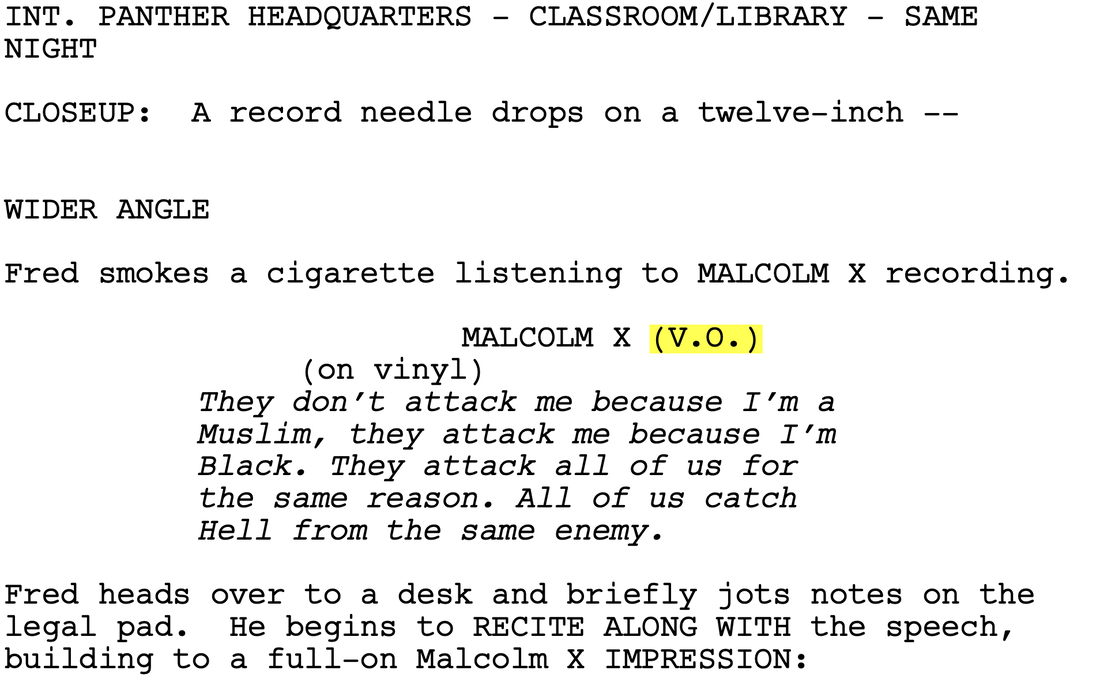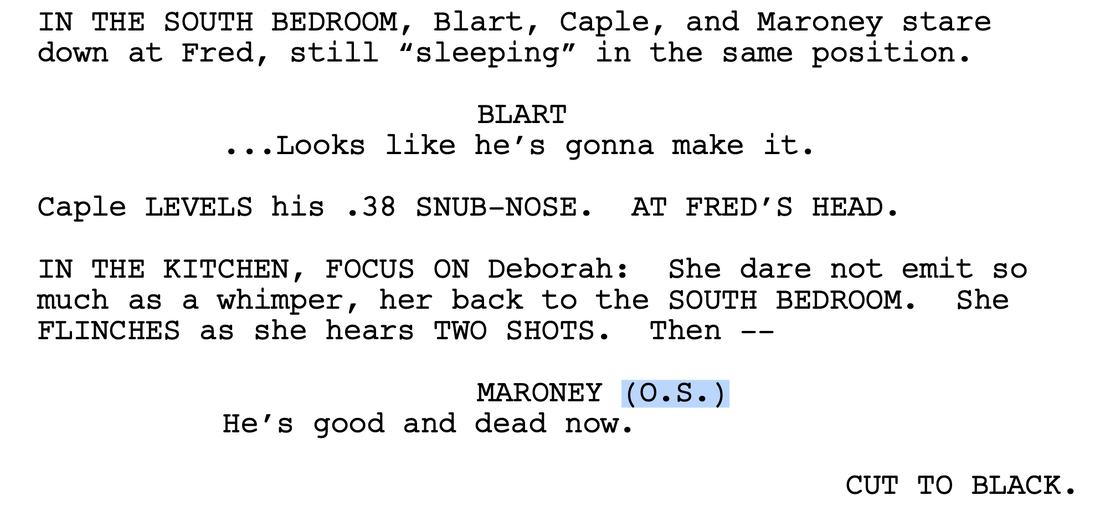|
Is it the voice of God or is the person just in the other room? Or maybe it’s a news broadcast. If you have been wondering about the differences between V.O., O.S., and O.C., then this article is for you! We will be breaking down the differences between the trio, when they are used on screenplays, and some common mistakes when screenwriting. V.O. 101V.O., formatted as (V.O.) to the right of the character's slugged name, stands for voice over and is used when a character’s dialogue will be recorded separately because the character isn’t in the same physical location. Think of it as a voice of God like narration. V.O. is also used for phone conversations and any audible content coming from a TV or radio, like a news broadcast, radio announcer, and even FaceTime. Let’s look at the example below from the screenplay, BABY BOY from our Screenplay Vault. In this example, the audience is hearing the protagonist’s Jody's voice over as we view the image of Jody as a full grown man inside of a womb. Jody is the narrator of the film so we see (V.O.) next to his name. We are not hearing the voice of the man in the womb; we're hearing the narration like the voice of God. Let’s look at another example of (V.O.) from JUDAS AND THE BLACK MESSIAH. In this scene our protagonist Fred Hampton is listening to a vinyl recording of a Malcolm X speech. This example shows how to format music playing on the radio. In JUDAS, they also chose to italicize the dialogue, but it isn't a standard formatting choice. O.S. vs O.C. Now, let’s dive into O.S. or off screen, formatted similarly to (V.O.). O.S. is when a character is speaking in a different physical space from the camera but can be heard. Think of it like this: Say two characters are in the living room and a third character is in the bathroom. The character in the bathroom, who is in a different physical space but can be heard, would be considered O.S. Make sense? Let’s look at another example from JUDAS AND THE BLACK MESSIAH. In this scene, a raid of the apartment building has just happened. We focus back into the kitchen with Deborah, but Maroney can still be heard from the bedroom as he speaks. Here is one final example from JUDAS AND THE BLACK MESSIAH. In this scene, there was a shoot out in the apartment. Doc is in the bedroom but can be heard from the living room by Caple, so this is formatted as (O.S.). Now, let's tackle O.C. or off camera, formatted similarly to the aforementioned elements. O.C. is when a character is speaking in the same space but is physically out of the frame/not “on camera.” For example, let's look back at the living room scenario. This time, both characters are in the living room, but the speaker is not in the frame. Now that we've looked at several examples from movies, let’s take a stab at writing our own scene for the O.C. example. In this scene, at first only Chole is in frame. While we can hear Chole’s Mom chastising her, she is not in frame which is why (O.C.) is denoted by her character’s name. THE MORE YOU KNOW Learning to properly format your screenplay can be pretty tricky. The best way to enhance your scriptwriting is to learn industry standard formatting by reading more screenplays. Our Screenplay Vault has screenplay examples available that you can read right on your phone. Want to learn the basics of screenplay formatting? Then check out our HTF Do I Format a Screenplay? Workbook where you’ll learn the fundamentals of formatting a screenplay including formatting definitions, do's and don'ts, and tricky formatting examples. Happy Writing! author
Leave a Reply. |
ABOUT
|
About |
COACHINGMEMBERSHIP |
RESOURCES#FreeGameBusiness services |
|
Gain access to:
|
Contact Us
Copyright © 2022 The Professional Pen








 RSS Feed
RSS Feed

